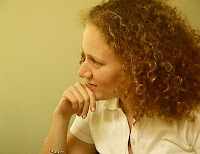Any kind of communication is a two way street. You talk; I listen, then I talk and you listen is the way it is supposed to go. It is only by listening to others that we get to know them and understand their point of view.
It is such a simple truth that you would wonder why we bother teaching it; of course we wouldn’t have to if we actually did listen. But we don’t; we engage in a number of very different activities while others are speaking; and our head gets full of all sorts of bits and pieces from all over the place that there is scarcely room in there for what the speaker is saying.
To begin with we make judgements. Right from the start, within the first five to ten seconds we have made a decision, a judgement concerning the topic. We ‘know’ where this is going, and we start trawling through our own thoughts and ideas, to find the ones that match or oppose. Listen? What for? I know all about this.
Well, we may do, but what we don’t know is what the other person thinks, believes or knows; and we might get a surprise if we actually listened.
Or we can filter out things we don’t particularly want to hear. Some of our deepest held attitudes, opinion and believes have come to us from hard soul searching, and once we have come to our decision or our opinions we really don’t want to have the boat rocked. We are not always open to hearing different opinions or ideas, and we do not give them the degree of consideration that they may deserve.
And yet, we mostly conform to the accepted standard of taking it in turns during a conversation; even though our heads are full of comments like “what a daft idea” or “that’s wrong, hasn’t she heard about Longman’s and Plank’s research on the hairy baboons?”
I wonder how different our view of the world would be, if we truly gave ourselves over to active listening.
Active listening means encouraging them by letting them know that you are actually engaged in listening to what they have to say. Positive eye contact is essential, no wandering eyes checking out who else is in the room, but a positive connection with the person you are speaking to.
Use supporting confirming remarks like, “I see”; or “that sounds difficult, what did you do?” These remarks tell the speaker that not only are you really listening but that you are listening with engagement.
And finally, confirm your active listening with supportive body language. Stand facing the speaker and avoid such negative indicators as tightly folded arms; there is a great deal of difference between softly folding arms for comfort and the tight body hugging ones that scream of defensiveness. Don’t fidget, it will indicate to the speaker that you would rather be anywhere else, and don’t lean back or they might think they have bad breath!
These are simple actions we can take to engage in active listening, but the simplest of all is just to give the other person the courtesy of engaging in actually listening, with concentration and focus to what they are saying, before we leap in to engage them with our carefully considered and brilliant retort.
Listening – it makes for much better communication and relationships.
Michele @ Trischel

